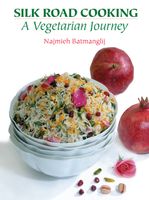Label
All
0
Clear all filters
🍝 Enjoy the cooking of Italy and save 25% on ckbk Membership 🇮🇹
Introduction
Appears in
Published 2000

Ancient Highways

The ancient web of overland trade routes linking the Mediterranean to China was named the “Silk Road” by a nineteenth-century geographer, who meant in particular the caravan paths that flowed north and south around the vast and deadly Central Asian deserts. The western gateway to these routes was the Stone Tower, now vanished but probably in Uzbekistan or Afghanistan; the routes entered China at the Jade Gate in the Great Wall near Dunhuang.
This central part of the Silk Road, however, touched many other trading routes. In the west, for instance, the Incense Route had from prehistoric times brought frankincense and myrrh to the Mediterranean from northeast Africa and southern Arabia; these precious gums were among the gifts the Persian Magi presented to the infant Jesus, according to the Bible. The 1,600-mile Persian Royal Road, perfected in the sixth century bce by Darius the Great, linked Susa with Sardis, near the Turkish coast. A spur of the Silk Road led from Balkh to trade routes crossing India. Another left Xian to traverse China from north to south.
In this section
Advertisement
Advertisement
The licensor does not allow printing of this title


